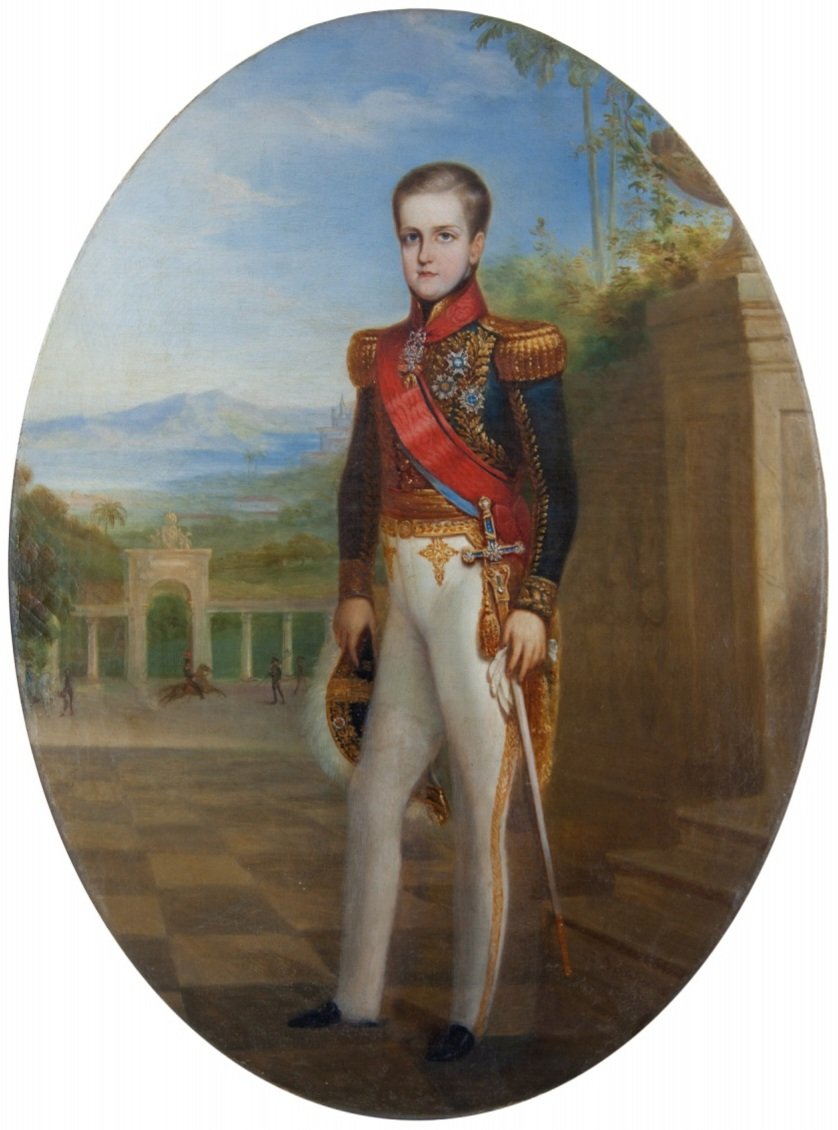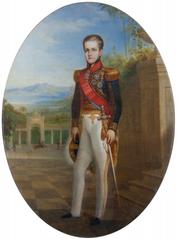
Paço de São Cristóvão Visiting Hours, Tickets, and Guide to Rio de Janeiro Historical Sites
Date: 14/06/2025
Introduction
Paço de São Cristóvão—also known as the Palace of Saint Christopher or Palácio Imperial—is a landmark of immense historical, architectural, and cultural significance in Rio de Janeiro, Brazil. Originally a private manor, it became the residence of the Portuguese royal family in 1808, later serving as the home of Brazil’s emperors and ultimately housing the National Museum of Brazil. This guide provides a comprehensive overview of the palace’s history, current status, restoration, visitor information, and practical tips for exploring both the palace and the surrounding Quinta da Boa Vista park. Whether you are a history enthusiast, a cultural traveler, or simply curious about Rio de Janeiro’s historical sites, this article will help you plan an enriching visit (SuperTravelr; Library of Congress; EAA).
Table of Contents
- Introduction
- Early Origins and Royal Acquisition
- Transformation into a Royal Palace
- Imperial Family Life and Historical Events
- The End of the Empire and New Purpose
- The National Museum Era
- The 2018 Fire and Restoration Efforts
- Architectural and Archaeological Highlights
- Integration with Gardens and Accessibility
- Visitor Information
- Frequently Asked Questions (FAQ)
- Restoration Timeline, Funding, and Partnerships
- Restoration Philosophy & Future Vision
- Exploring Quinta da Boa Vista and Nearby Attractions
- Visuals and Interactive Resources
- Conclusion & Call to Action
- Summary and Visitor Tips
- Sources
Early Origins and Royal Acquisition
The origins of Paço de São Cristóvão trace back to the early 19th century, when Portuguese merchant Elias Antônio Lopes built a manor on the hilltop of the Quinta da Boa Vista estate in 1803. In 1808, as the Portuguese royal family fled Napoleon’s invasion, Lopes donated the manor to Prince Regent John VI (Dom João VI), who established it as the royal residence. This pivotal moment marked the start of the palace’s transformation into a symbol of imperial authority (SuperTravelr).
Transformation into a Royal Palace
Significant renovations began in 1819 to accommodate the royal family, introducing neoclassical architectural features and lavish interiors. After Brazil’s independence in 1822, Emperor Pedro I continued to embellish the palace, commissioning Italian and French artists and landscape designers, including Auguste François Marie Glaziou, who created the estate’s romantic gardens (SuperTravelr).
Imperial Family Life and Historical Events
As both a seat of power and a family residence, the palace bore witness to important events such as the births of Maria II (later Queen of Portugal) and Pedro II, and the death of Empress Maria Leopoldina. The gardens—transformed into a picturesque landscape with lakes, bridges, and faux temples—became a hallmark of the estate (SuperTravelr).
The End of the Empire and New Purpose
The abolition of the monarchy in 1889 ended the palace’s royal era. By 1892, the building was repurposed as the National Museum of Brazil, Latin America’s oldest scientific institution. The interior was adapted for museum use, with many original royal elements relocated to other institutions (SuperTravelr).
The National Museum Era
The National Museum housed a vast collection spanning natural history, anthropology, archaeology, and more. It contained such treasures as the 11,500-year-old “Luzia” fossil, Egyptian mummies, meteorites, and artifacts from Brazil’s indigenous cultures. As a research and educational center affiliated with the Federal University of Rio de Janeiro, it inspired generations of scientists and scholars (Library of Congress; EAA).
The 2018 Fire and Restoration Efforts
On September 2, 2018, a catastrophic fire destroyed much of the building and approximately 92.5% of the museum’s irreplaceable collections (Library of Congress; EAA). The disaster prompted a global outpouring of support and a major restoration campaign, Museu Nacional Vive, involving national and international partners, including UNESCO. Architectural restoration focuses on historical accuracy, integration with the gardens, and universal accessibility (Museu Nacional Vive; Royal Central).
Architectural and Archaeological Highlights
The restoration has revealed original architectural elements, including exposed masonry and the 19th-century chapel apse. Surviving features like the Bendegó meteorite and the Carrara marble staircase are being preserved and integrated into the visitor experience. New museographic displays, tactile guides, and accessible features are in development (Museu Nacional Vive).
Integration with Gardens and Accessibility
Landscape restoration includes the historical Jardim das Princesas, the Jardim Terraço, and the new Jardim Norte. Universal accessibility is a guiding principle, with ramps, elevators, accessible restrooms, tactile flooring, and sensory-friendly spaces being implemented throughout the site (Museu Nacional Vive).
Visitor Information
Visiting Hours & Tickets
- Quinta da Boa Vista Park: Open daily, 6:00 AM–6:00 PM, free entry.
- Paço de São Cristóvão/National Museum: Closed for restoration as of June 2025. No palace entry; check Museu Nacional Vive for updates on temporary exhibitions and events.
Guided Tours & Educational Programs
Temporary exhibitions and educational activities are occasionally held in nearby facilities and online. Some events may require advance registration.
Accessibility
The park is wheelchair accessible. The restored palace will include ramps, elevators, accessible restrooms, tactile guides, and sensory-friendly spaces.
Getting There & Travel Tips
- Location: São Cristóvão neighborhood, within Quinta da Boa Vista park.
- Metro: São Cristóvão Station (Line 2), about 1 km from the park entrance.
- Bus: Several lines serve the area.
- Car: Limited parking; public transport recommended.
- Taxi/Rideshare: Widely available.
Wear comfortable shoes for exploring the gardens, and bring water, especially on hot days.
Frequently Asked Questions (FAQ)
Q: What are the current visiting hours for Paço de São Cristóvão?
A: The palace is closed for restoration. Quinta da Boa Vista park is open daily from 6:00 AM to 6:00 PM.
Q: Are tickets required to visit?
A: No tickets are required for the park. Palace entry is not available during restoration. Special events or exhibitions may require advance registration.
Q: When will the palace reopen?
A: Partial reopening is projected for April 2026; full reopening is expected by 2028 (Museu Nacional Vive).
Q: Are guided tours available?
A: Guided tours are periodically offered during special events. Check official sources for details.
Q: Is the site accessible for people with disabilities?
A: The park is accessible; the restored palace will meet universal accessibility standards.
Restoration Timeline, Funding, and Partnerships
- 2018–2024: Emergency stabilization, facade and roof restoration.
- 2024–2025: Restoration of lateral blocks, facades, skylights, and key historic spaces.
- 2026: Projected partial reopening.
- 2028: Full reopening planned.
Funding comes from federal, state, and municipal governments, private sector sponsors (such as Bradesco and Vale), and international organizations like UNESCO (Royal Central).
Restoration Philosophy & Future Vision
The project emphasizes historical authenticity, reversibility, and sustainability. The goal is to transform the palace into a modern hub for science, culture, and education, with an expanded library, contemporary museography, new research and teaching spaces, and revitalized gardens (Museu Nacional Vive).
Exploring Quinta da Boa Vista and Nearby Attractions
- Quinta da Boa Vista: Expansive gardens, walking paths, picnic areas.
- Rio de Janeiro Zoo: Within the park.
- São Cristóvão Neighborhood: Traditional food markets and cultural festivals.
- Nearby Sites: Candelária Church, Museum of Tomorrow, Royal Portuguese Reading Room.
Visuals and Interactive Resources
Virtual Tour of the National Museum and Paço de São Cristóvão
Conclusion & Call to Action
Paço de São Cristóvão is a testament to Brazil’s imperial heritage, scientific achievements, and cultural resilience. Even as restoration continues, the palace and its gardens remain emblematic of Rio de Janeiro’s rich history. Plan your visit to Quinta da Boa Vista, stay informed about restoration progress, and make use of resources like the Audiala app for guided tours and interactive experiences. For the latest updates on reopening, events, and visitor information, consult the official Museu Nacional Vive website.
Summary and Visitor Tips
- Paço de São Cristóvão is a historic palace and former royal residence, now under restoration after a devastating fire in 2018.
- The palace is closed as of June 2025, but Quinta da Boa Vista park is open daily and accessible.
- Restoration is progressing, with partial reopening scheduled for 2026 and full reopening by 2028.
- Temporary exhibitions and educational activities are available in adjacent facilities.
- Check official sources for updates on visiting hours, tickets, and guided tours.
- Wear comfortable shoes, use public transport, and explore nearby attractions for a full cultural experience.
Sources
- SuperTravelr – A Brief History of Paço de São Cristóvão
- Library of Congress – National Museum of Brazil: Remembering Its Past
- EAA – National Museum of Brazil: Rio de Janeiro
- Museu Nacional Vive – Project Commitments
- Royal Central – Restoration News
- Arts & Culture Google – Museu Nacional UFRJ
- UNESCO – The New National Museum of Rio de Janeiro Rises from the Ashes
- WhichMuseum – National Museum of Brazil
- Audiala App




















































